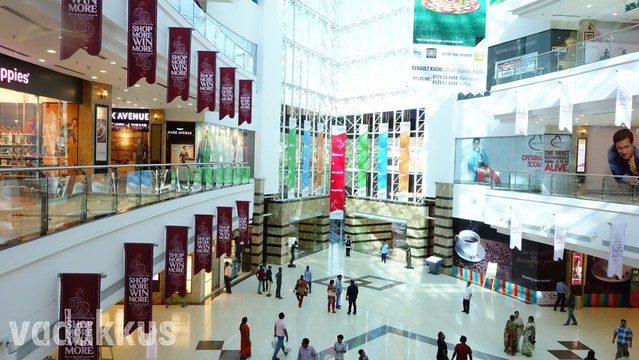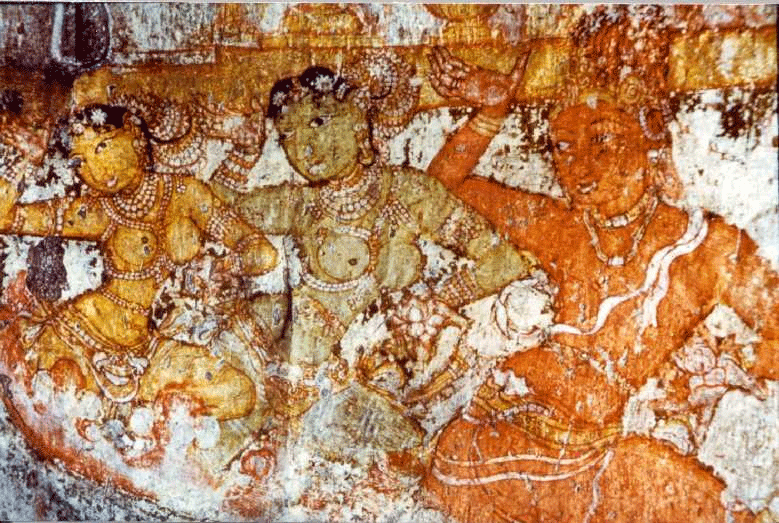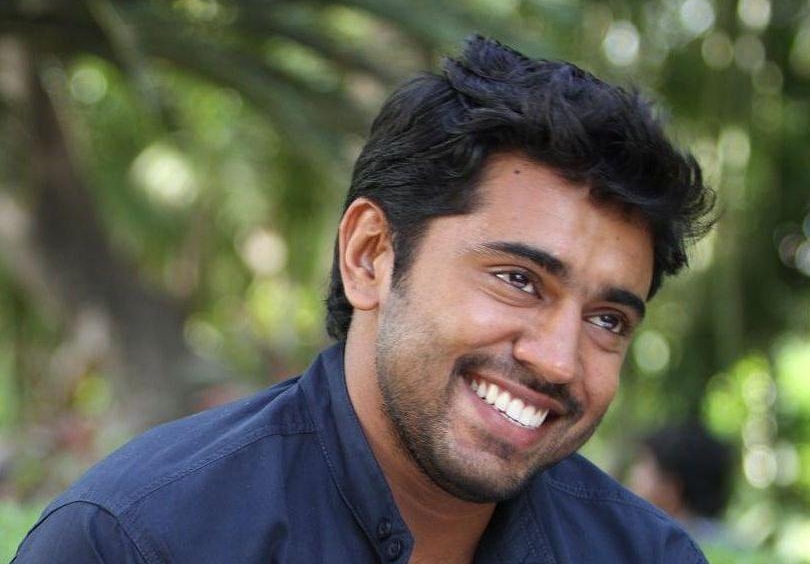On the clammy evening of the 3rd of June 1991, during one of the most tumultuous periods in the history of independent India, a cargo van broke down with a flat tyre on a busy highway leading to the Sahar International Airport in Bombay. The van contained a highly classified and secret cargo, the existence of which and the process and reasons of its transport by an Air India flight to London was known only to a handful of people in the highest echelons of the government, a process whose success was essential for the very survival of existence of the polity known as the Republic of India. Unknown and unthinkable to anyone during that time, the van, flat tyre and all, and its cargo had set in motion a chain of events which 23 years later, almost to the date, would result in the crowning of a certain Narendra Damodardas Modi as India’s 14th Prime Minister.
Before making the win of Shri Modi sound like a Fredrick Forsyth novel, I would like to add a few words of caution here. I am not attempting to take apart and piece together the BJP campaign like almost everyone else already doing it. Neither am I trying to raise and validate Modi’s credentials, what he did do, didn’t do, should’ve done… I think we have had enough of all that for the past 12 years. What I am trying to do, is from a purely academic point of view, is trying to find out what lead to this massive victory. We all know the reasons for the victory: bad governance and all those other bad things by Congress and the blockbuster campaigning by BJP and Modi’s leadership. But is that reason enough to explain this massive win? There have been worse governments before and none suffered on the scale of the Congress in 2014. In fact, this is the first time in 30 years since 1984 that a single party has won a majority in the Lok Sabha on its own and the first time in 34 years (since 1980) without the help of external factors such as assassinations. This rout did not just happen overnight, but was the culmination of a chain of events that lasted 23 years, a process which started on that balmy evening in Mumbai on June 3 1991. And it can be only shocking irony that the very person who set in motion that process was the one who was eventually struck down by it 23 years later. Yes, it was Dr. Manmohan Singh.

India’s Economic Crisis of 1991
Ever since independence, for 45 years, India was locked up in Nehruvian and later the even worse Indira model of socialism. There was no economic growth, no jobs, no money and no Cable TV. This untenable system was bound to fail from the start but all governments (all socialist) were successful in hiding the faultlines beneath the surface. But those cracks would eventually explode over the surface, it was only a question of when. The decline had reached critical proportions by 1989 thanks to Rajiv Gandhi’s misadventures but no one took notice. May 1991. The USSR was falling apart and we had lost our primary trading partner (buyer) and ally and hence the flow of dollars. The first Gulf war had just got over and we were still facing acute shortages of oil whose prices had nearly doubled. And political warmongering had created two near non-functioning governments under two Prime Ministers (VP Singh and Chandrasekhar) in the past one and a half years, whose only preoccupation was to hold on to power somehow and not to give even a tiny shit about the country. And then there was the Mandal Commission, militant violence in Punjab and Assam, the LTTE mess in Sri Lanka and so on. India had become a laughing-stock and its economy a joke. And then Rajiv Gandhi was assassinated.
A set of critical junctures precipitated by the long overdue collapse of the USSR-inspired Nehruvian model of Socialism came together and brought the country to its knees. Simply put, India was broke. We needed dollars to buy food, oil and fancy things for our politicians. The very survival of the country was at stake. For immediate relief we sold 2o tonnes of Gold to the Union Bank of Switzerland (yes, THE Swiss Bank) and raised $600 million on May 30 1991. But that was not enough. So with whatever remaining gold we had, we approached the Muthoot Finance of the world, the IMF, who smiled, twirled its pen, leaned forward on its desk and told India in no-nonsense terms that if we wanted money, we should cut up the red tape, release the rupee and liberalize our economy. Else, no deal. India was in no condition to negotiate anything and signed on the dotted line and the caretaker Chandrasekhar government authorized the airlift of 47 tonnes of Gold to London to raise 1.6 billion Greenbacks. The first van with the gold rolled out of the RBI office in Mumbai on its way to Sahar airport on June 3 1991, signalling the end of an era and the beginning of the next, one which would change India beyond recognition in less than a decade.
But how does Modi have anything to do with the liberalization process? It was P.V.Narasimha Rao who really put the reform process in motion. But it was Dr.Singh who oversaw the process of pledging India’s gold with the IMF. And Modi today is the direct beneficiary of that process in more ways than one. Let me explain.
The Chain of Events: 1991 to 2009: The Birth of the Indian Right
The economic reforms of 1991 was precipitated by a crisis of existence. For 44 years since independence, India was a dusty and stagnant economic backwater where nothing much changed. Even if you had money, there was nothing you could do with it; there was nothing to buy except Cadbury’s chocolates, washing powder Nirma and Ambassador cars. The only way to make it good in life was to leave the country. Almost everyone who lived in Nehru-Indira India were all staunch leftists, thanks to unabated propaganda and the fact that they hadn’t really enjoyed the finer fruits of consumerist life. But look at the Indians of today. Those mousy types who celebrate frugality and protectionist economics have completely disappeared. In just 30 years, during the time span of one generation, India has turned almost completely from economic left to right, a population of young, empowered and thirsty-for-success people under the age of 35 all who are vehemently against the Congress and all its socialist policies of economic largess and doles. Who created this economic (and largely cultural) right? Dr.Manmohan Singh, PV Narasimha Rao and the Congress party did. And it was this economic right who overwhelmingly voted Narendra Modi to power, completing a huge circle which makes for fascinating study.

The reforms of 1991 opened a whole new world for India. Young Indians saw an explosion of new job opportunities in IT and ITES, hospitality, telecom, banking and finance, technology and manufacturing all driven by foreign investment and the private sector. Suddenly Indians were earning more in a couple of years what their fathers did in a lifetime. It also created a well-traveled, well-read and well-informed populace of young Indians, a burgeoning and super-ambitious middle class who were suddenly aware of all the shortcomings of the socialist model India was following for five decades. More and more Indians started turning right, the beginning of the point of flux that would eventually cause the downfall of the Congress in 2014. Vajpayee’s BJP government did collapse in 2004 but that was because India’s economic right had not reached critical mass yet, and thanks to years of brainwashing, “economic freedom” was still considered evil spawned by for-profit corporates who were out to enslave the proletariat. During UPA 1 and then especially during UPA 2 Indians saw all that growth slowing down and then almost coming to a halt. These new Indians, liberated thanks to the access to the Internet and new media, became aware how things work and started turning against the old forces holding them back.
But how did Manmohan’s generation of 1991 bring about this change? Weren’t those economic yuppies of the 21st century his creation? How could they topple him? Easy. The 30-somethings of this generation (including me) were the first ones to benefit from the reforms. We were the first to take control of the Internet, new cars, low-cost flights, a plethora of foreign-branded consumer products and white goods, shopping malls, Volvo buses, foreign holidays, the founding entrepreneurial class and so on. We loved it. Personally I feel sad that our previous generations (and my childhood) was denied all this by Nehru and Indira. We wanted more. We are impatient. We wanted to grow, create startups and businesses and jobs. We wanted a government that supported us with sensible policies and infrastructure. But what we saw is the UPA who is refusing to heed us, making it difficult for us to get jobs and give good things for our children while pandering to outdated socialist models. Even our seniors who had grown up in socialist India and made good money out of Congress’ reforms were turning anti-Congress.
The first time voters of this elections, the 18 to 24 year-old Gen Z had grown up in reformed India with all the trappings of the westernized good life, especially its communication devices. They don’t know, don’t want to know and don’t care what India was before 1991, what happened then and who did what. All they care is about the present and future, both of immense opportunities. As far as they were concerned, India was always liberalized. They looked at the current government and saw only scams, corruption, pseudo-secularism, misgovernance, arrogance, crumbling infrastructure and a weak PM who does not speak. Even the socially and economically weaker sections among us are today widely aware of whatever is happening around the globe and how India is falling behind. And I am not talking about just the youngsters in the cities. The reforms not just opened up India to the world, it opened up the world to Indians as well. And Indians saw how the world worked and saw it was good.
There is a simple reason why the Congress lost, it was their refusal to accept that India and Indians had changed, an India that they themselves created. While a generation of economically liberalized Indians (created by the Congress) moved on thirsty for more, the party was still stuck in the 1970s, harping about socialism and leftism, two most despised words by the new Indian. Narendra Modi was just waiting to happen.

The Chain of Events: 2009 to 2014; The Rise of Narendra Modi
How does Modi fit into all this? He was not even in the picture in 2009. This is where smart marketing comes in. In our MBA classes we were taught the best way to build the most successful product is to find a gap and fill it. And Modi did find that gap and used all his resources at his disposal to fill it. He worked hard towards it and won it fair and square, this victory in its entirety belongs to him! Those who say that he marketed himself too much and all that should remember that no other parties were banned or anything from using those tools. The gap that Modi filled was the promise of good and strong governance. UPA stumbled from blunder to blunder with a procession of misadventures: the mega-scams, attempts to control and censor the internet, massive inflation leading to runaway price rise, slowing and stagnation of economic growth thanks to populist policies, unfriendly business atmosphere created by policies such as retrospective taxation, the epic fall of the rupee leading to fears of an economic meltdown, the massive anti-corruption movement, the Delhi rape case, avalanche of reports on crimes against women, the hegemony of one family on the rule of India and a PM who would not speak, and above all, the absence of a strong and decisive PM candidate. But they were in denial of all this and believed that they could survive on the votes of the Indian of the dusty hinterlands and the minorities.
This election hopefully has busted a few myths about vote banks and safe seats.
— Numbyaar (@NumbYaar) May 16, 2014
Congress’ defeat was largely of its own making. The liberalized generation of today is intensely aware of everything that goes on around them but are mostly apolitical when it comes to staunch ideologies and more secular than ever before. I grudgingly admit to what Chetan Bhagat says about what young India wants. And young India will vote for whoever gives that to them. If UPA had followed and built upon PVNR’s economic model and stayed away from looting, they might have voted UPA3 to power. The outraged children of the new India desperately started looking for hope elsewhere. Modi immediately invited them aboard his gravy train, selling the Gujarat development story and promise of a better India administered by a strong and decisive government. It did not matter whether the development and governance stories were true or not. The promise was good enough. Meanwhile, the Congress still believed that India was stuck in 1977 and still believed that India could be won by barriers of religion, caste and doles. Indians, urban or rural, had moved on long ago, which Congress and their allies refused to see and acknowledge. The Internet did play a role in Modi’s win because the Internet flows into the media and the influence of the net-savvy Indian extends outwards from the virtual to the real world as well. However, it has to be noted that this massive mandate in favor of the BJP is for Modi’s development agenda and not the BJP’s old agenda of social conservatism. Let us not talk about the clueless Congress leadership.
'The poor can't eat roads,' says Rahul Gandhi in his interview to us. Haven't heard a more breathtakingly half-baked view. #RaGaSaga
— Shiv Aroor (@ShivAroor) April 12, 2014
In all, those vans which left the RBI building on June 3 1991 were not just bailing out India from the biggest economic crisis of its history but they also were giving birth to the economic right in India, which would grow up and 23 years later would vote decisively against that very man and his party which actually had caused their birth and growth. But that is history, sir. There are no ifs and buts in history, it favors only the brave and the forward looking. As the revolutionary Malayalam poet Kumaran Asan wrote:
“Change your ways, or the change will change you!”
Dr. Manmohan Singh, I truly feel sorry for you. You created the “new India” we see today, but thanks to the policies of your own government and party, you fueled the ascent of Narendra Modi to head India by the votes of those liberalized Indians you yourself had empowered. India had changed. And that change finally caused the change of the Congress itself. Or should I say, ‘MODIfication?’ ;)





Bravo…we'll written!!!
Great piece of work. great thinking process. great mind X 1 billion likes!!!
This reads as though Modi is an undeserving candidate who somehow won because of the 1991 reforms. What about his own 3 term track record as Gujarat CM?